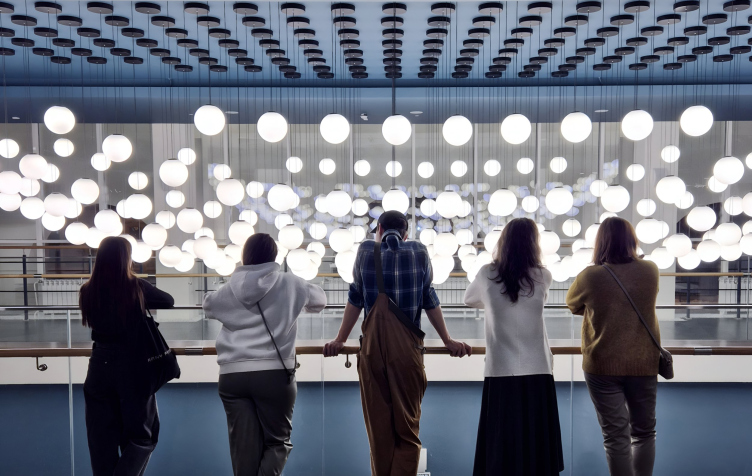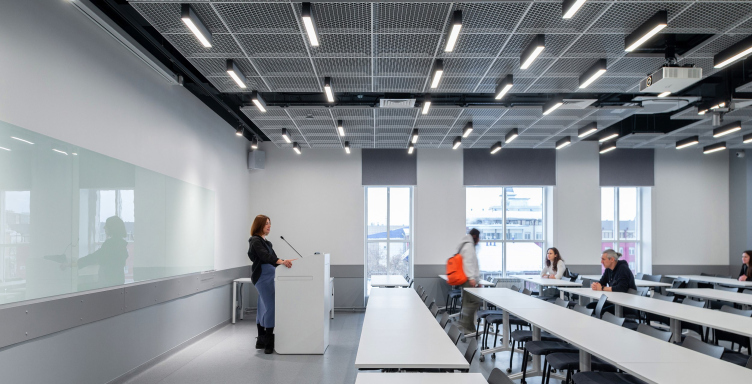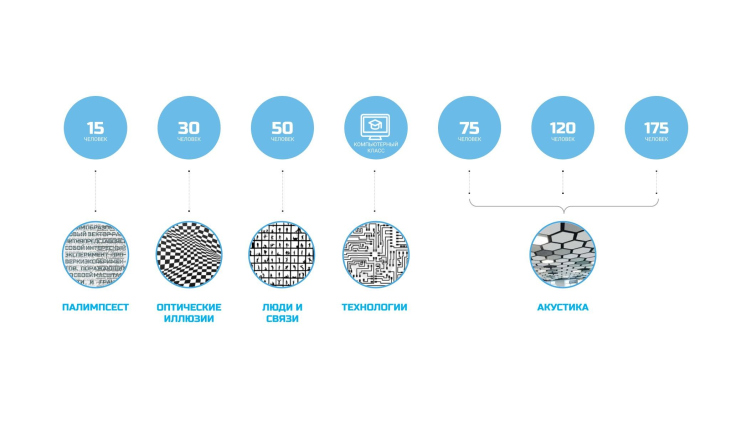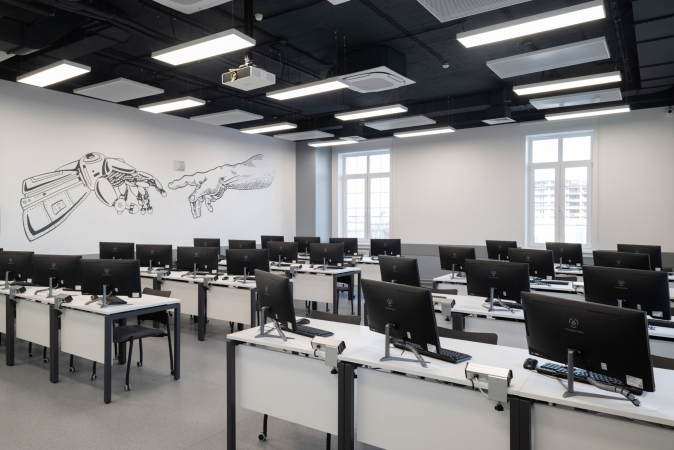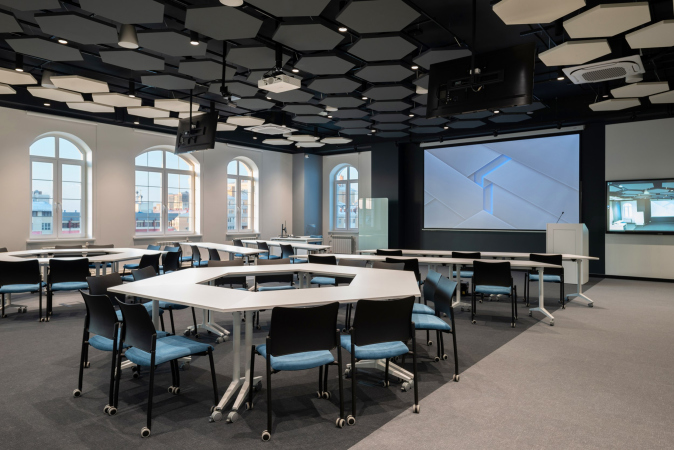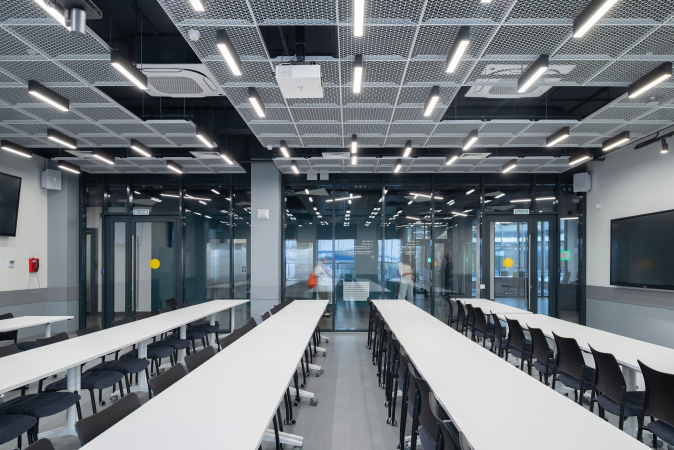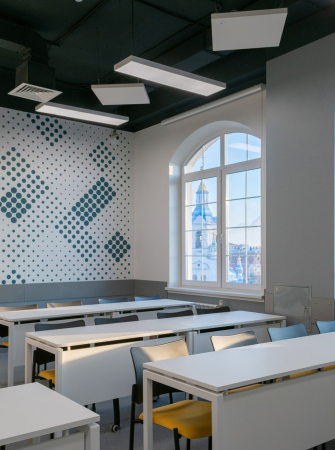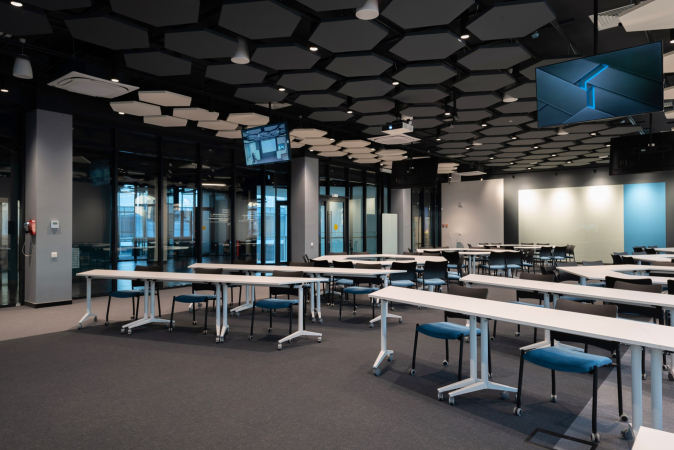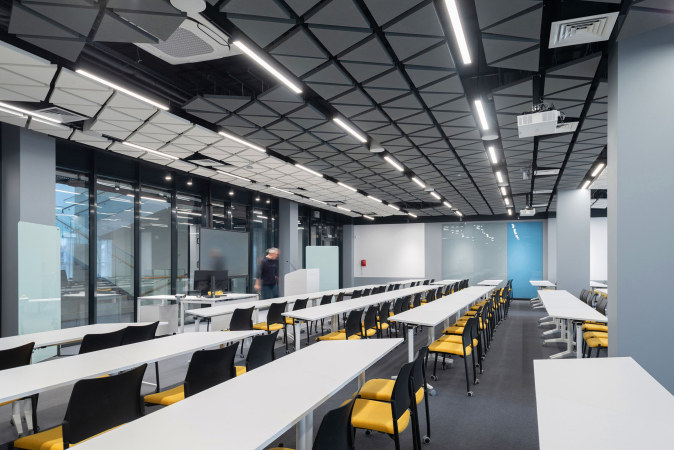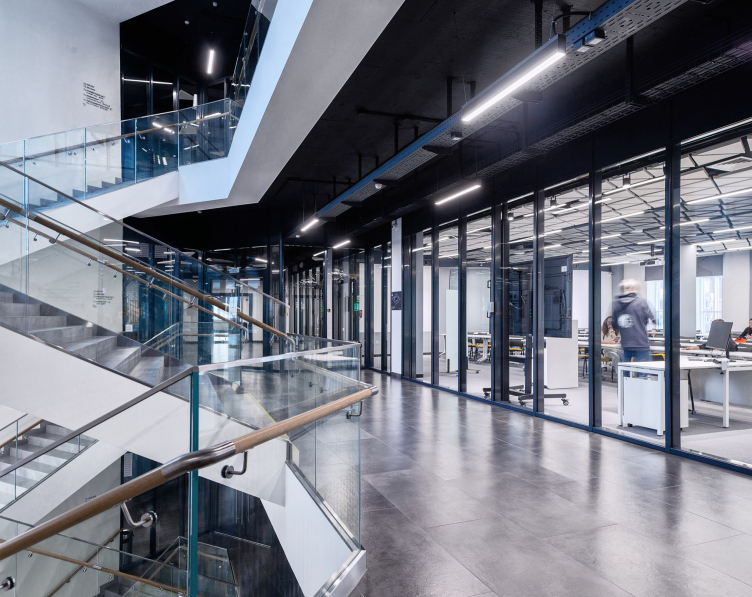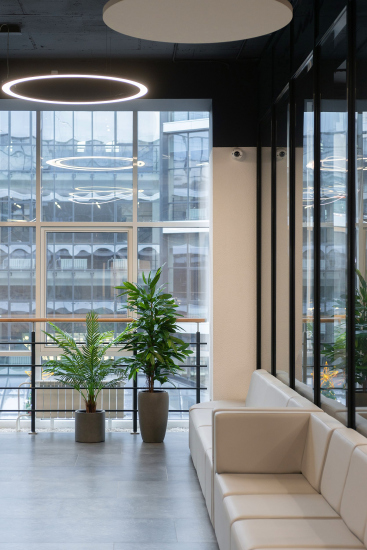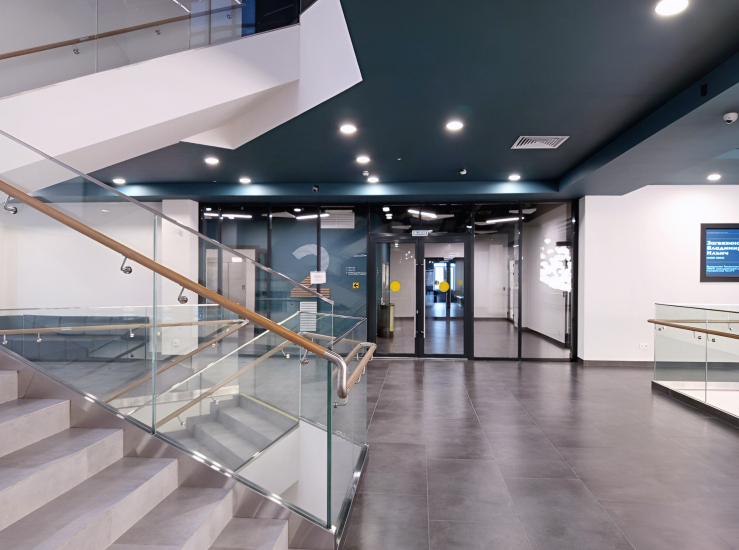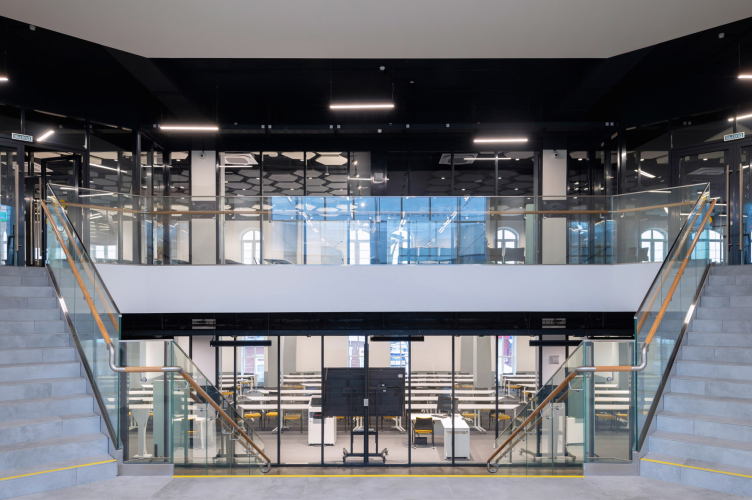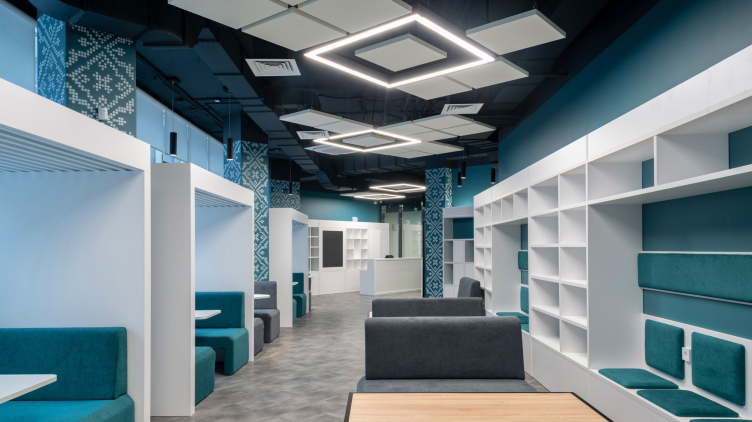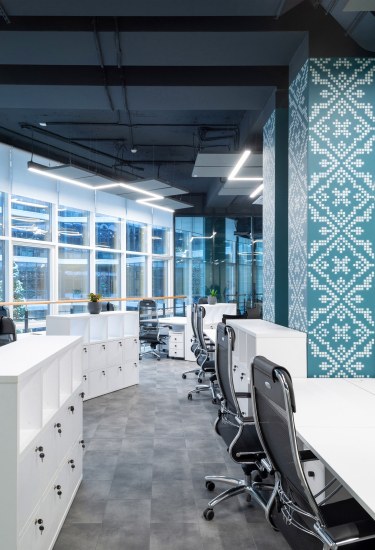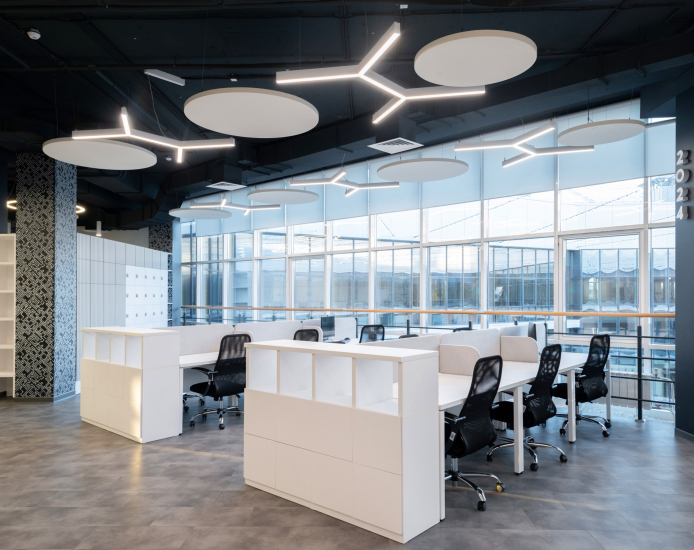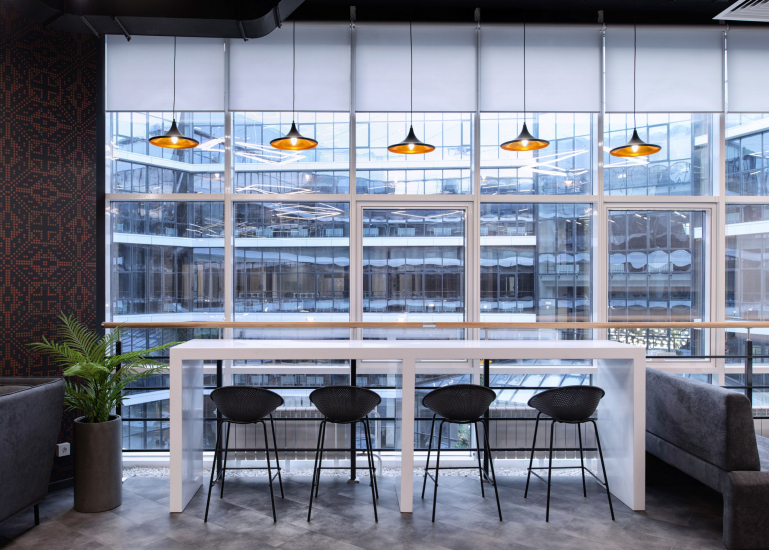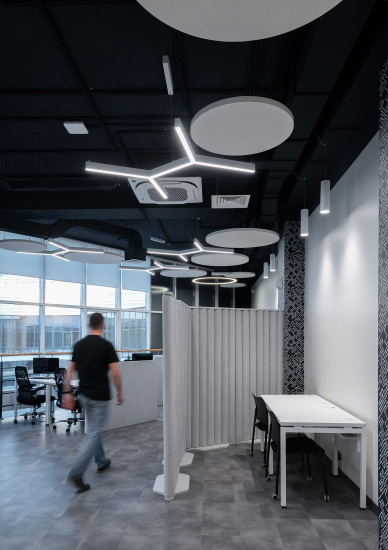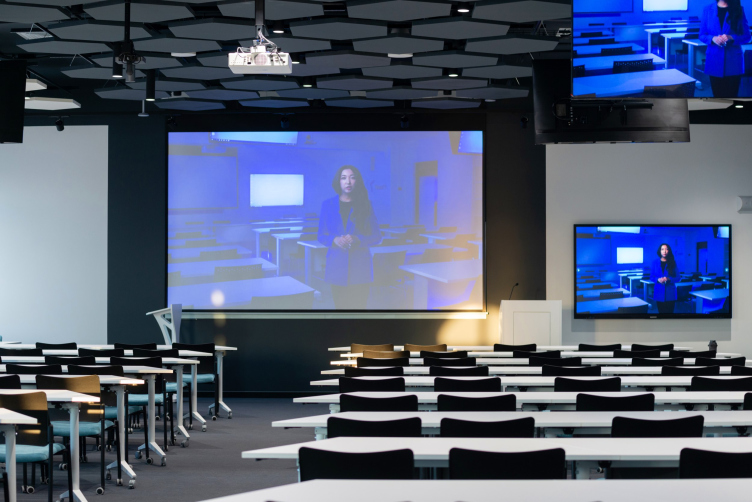The building design was developed and approved several years ago, before the pandemic.
In 2022, Tyumen State University switched from a traditional academic model to the “2+2+2” system.
This new structure eliminates conventional student groupings and academic streams. Instead, each student follows a personalized program, which requires a different kind of interaction with instructors – and hence calls for a new spatial logic.
By the time work began on the building’s interior spaces, many of the previously approved architectural decisions no longer aligned with the demands of contemporary education.
The main challenge was adapting the architectural framework to these new needs. The greatest constraint: time. Design work had to be tightly synchronized with construction, which was already underway.
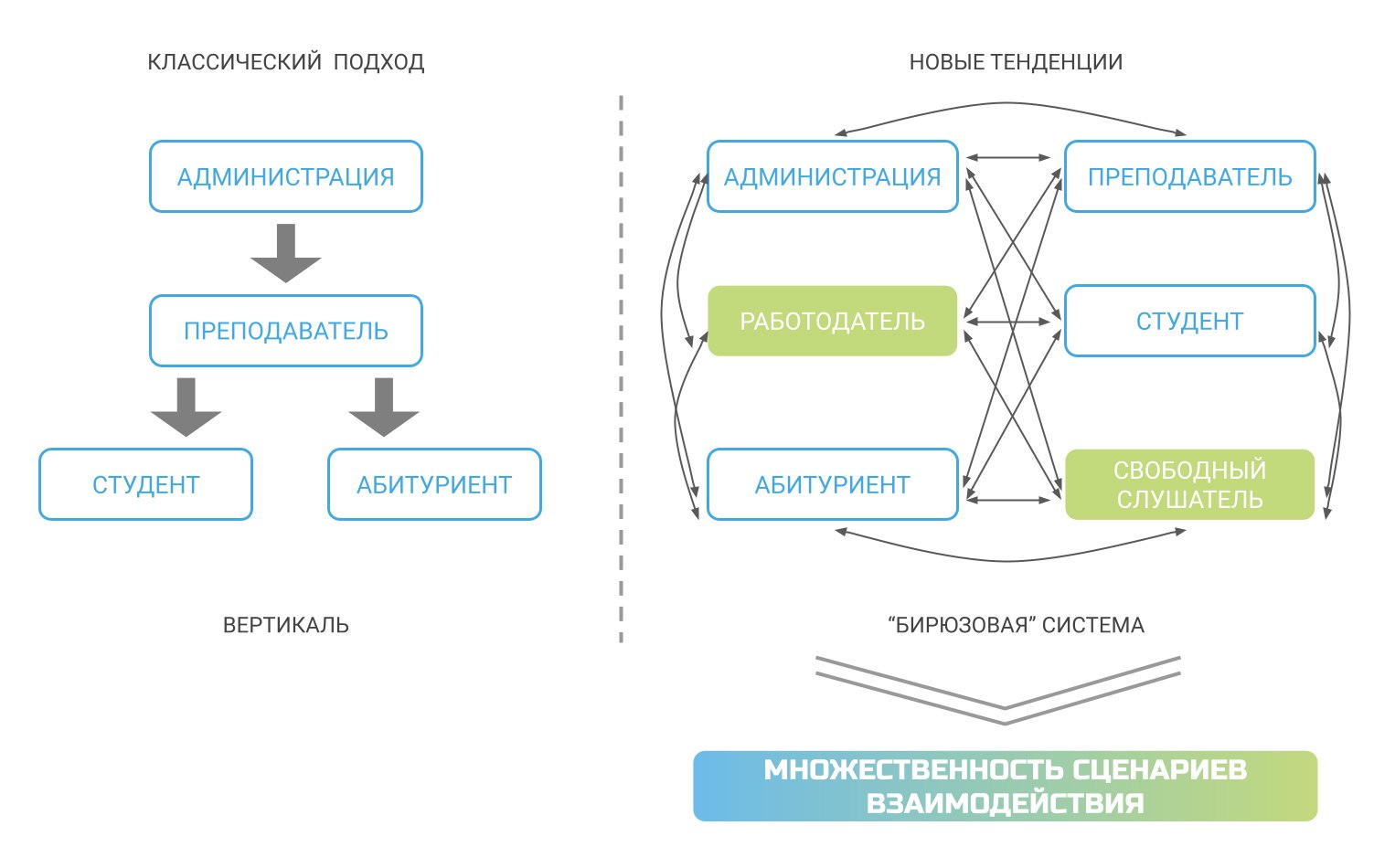
A universal, versatile, multifunctional educational space
- 3,000 students
- 19 lecture halls
- 36 classrooms
- 14 computer labs
- 12 coworking areas
- 2 exhibition spaces
- Cafeteria, snack bar, café
- Assembly hall serving both the university and the city
- Authentic goods shop
- Underground parking
- Multifunctional inner courtyard
Tyumen State University. The new technology building
Copyright: Photo © Igor Kolesnikov / Courtesy of People′s Architect
The Approach
Together with the university faculty council and the broader team, a manifesto of core values was developed:
Versatility and Hybrid Use
Nearly all campus spaces are designed to support multiple use scenarios. This is made possible through both spatial planning and the inclusion of flexible furniture and media equipment.
Even the circulation areas are intended not only for the locomotion of the university students but also for individual study and group discussion.
Transparency
Educational processes are transparent and open to observation. Glass walls and classroom doors help reinforce this principle, and so do the multimedia scheduling system combined with hybrid online learning tools.
Technological Integration
The new laboratory and technology building utilizes modern audio and video communication systems integrated into the architecture and interior of the building: video communication and broadcasting systems, sound control, purification and reproduction systems, as well as powerful server units that provide students and instructors with the necessary resources for creating network systems and scientific multimedia projects.
Continuity
The interior design of the building – including color schemes, graphic prints, and text-based patterns – is meant to tell the students about the history and potential of the Tyumen region.
Quotes from prominent scientists are featured on classroom walls to spark discussion among students within the framework of contemporary educational paradigms.
Tyumen State University as Identity
The new technology building brings together imagery and motifs that reflect the region’s history, traditions, and heritage – while also pointing to the future of education and the city.
The core concept of the project is an analogy between the development of the Tyumen region and a growing tree, where each passing year adds a new ring to the trunk.
Each historical phase of the city’s development is envisioned as a new ring forming around a shared center.
A student, immersed in this environment shaped by that idea, moves daily through a cycle of interaction between two realms – past and future. One presents vast new opportunities, while the other helps interpret and value them properly.
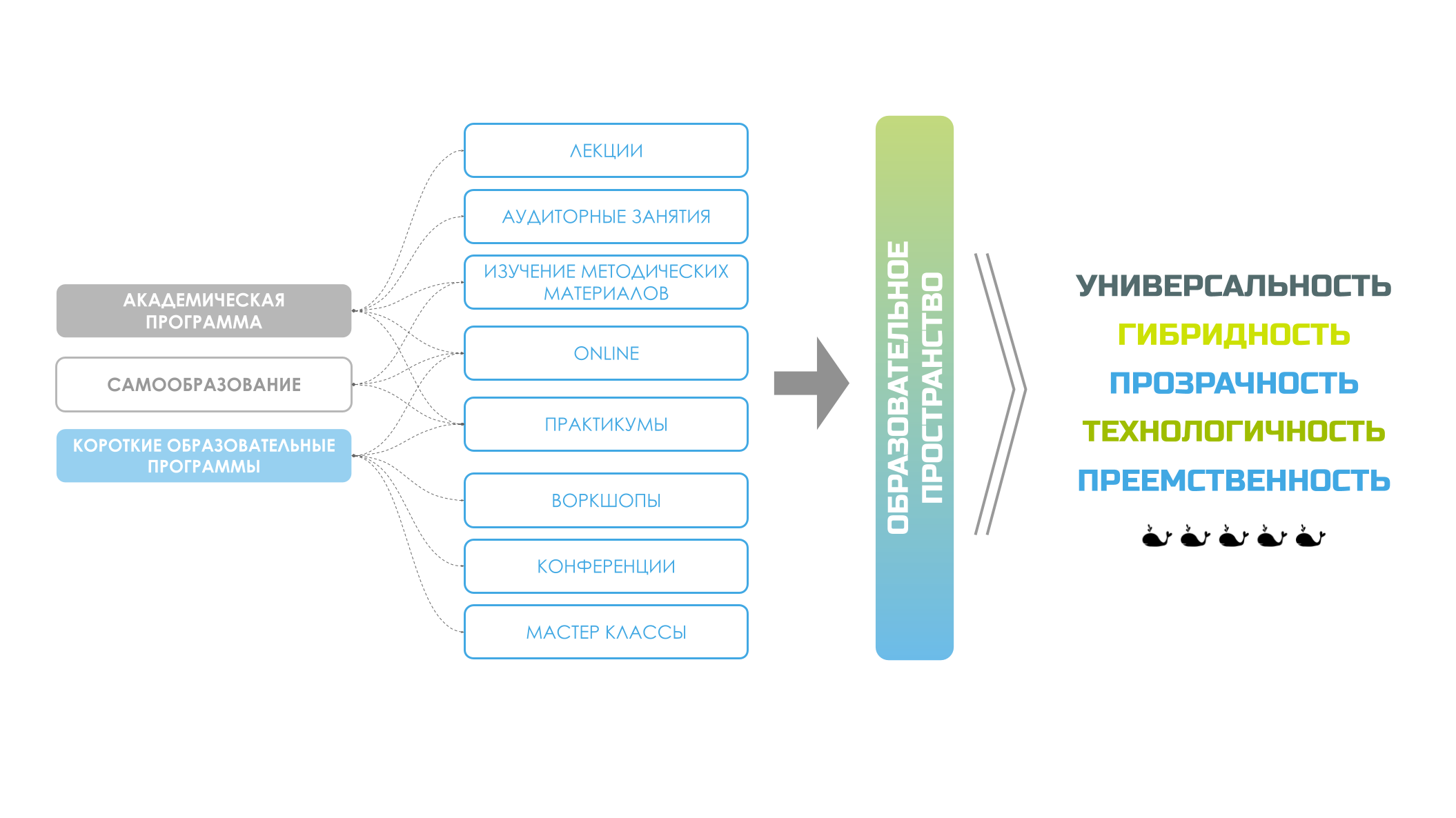
Our team worked directly with the future users – faculty members and the university team – effectively becoming co-authors of both the architecture and the future educational process.
This collaboration made it possible to go from concept to completion in just 18 months.
This collaboration made it possible to go from concept to completion in just 18 months.
THE OUTER RING – CLASSROOMS
The institute’s outer “ring” consists of lecture halls and classrooms – a reflection of the present day, a stronghold of technology, and a generator of the city’s future. These classrooms are equipped for hybrid learning formats. Their interiors are fully transformable to meet the needs of any activity: integrated audio and video communication systems, lab equipment, adjustable lighting, movable furniture, and modular systems for storage and display.
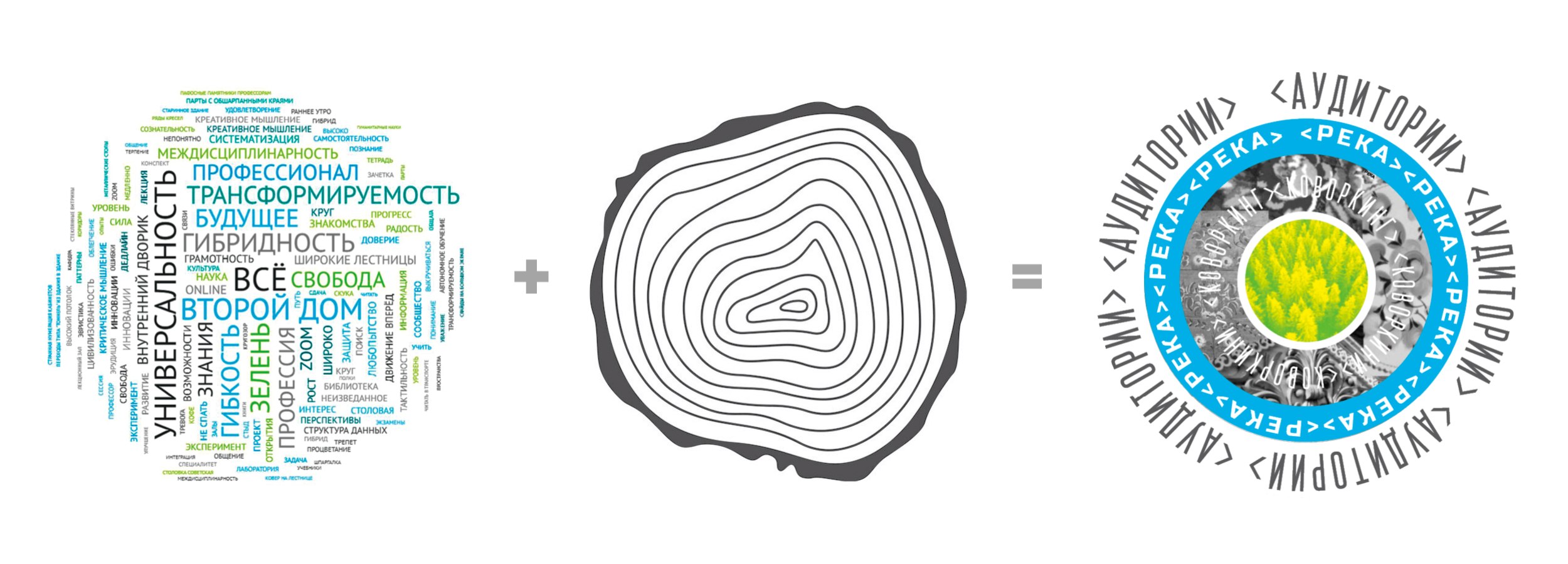
Tyumen State University. The new technology building
Copyright: Photo © Igor Kolesnikov / Courtesy of People′s Architect
Patterns as a visual language for identifying classrooms
Copyright: Photo © Igor Kolesnikov / Courtesy of People′s Architect
The River – Communications
Between the old and the new lies an essential connecting element – a primal force, a river that has flowed here for millennia, witnessing both the city’s founding and its rise.
Tyumen State University. The new technology building
Copyright: Photo © Igor Kolesnikov / Courtesy of People′s Architect
THE INNER RING – COWORKING SPACES
This is a space that conveys the region’s identity: its crafts, character, and historical legacy. Designed to foster both communication and concentration, it balances openness with privacy to support learning and working processes alike.
Tyumen State University. The new technology building
Copyright: Photo © Igor Kolesnikov / Courtesy of People′s Architect
Tyumen State University. The new technology building
Copyright: Photo © Igor Kolesnikov / Courtesy of People′s Architect
Tyumen State University. The new technology building
Copyright: Photo © Igor Kolesnikov / Courtesy of People′s Architect




